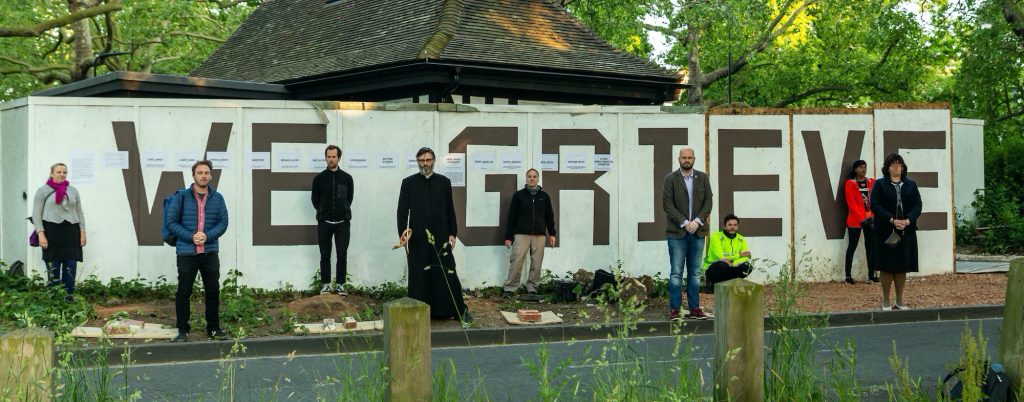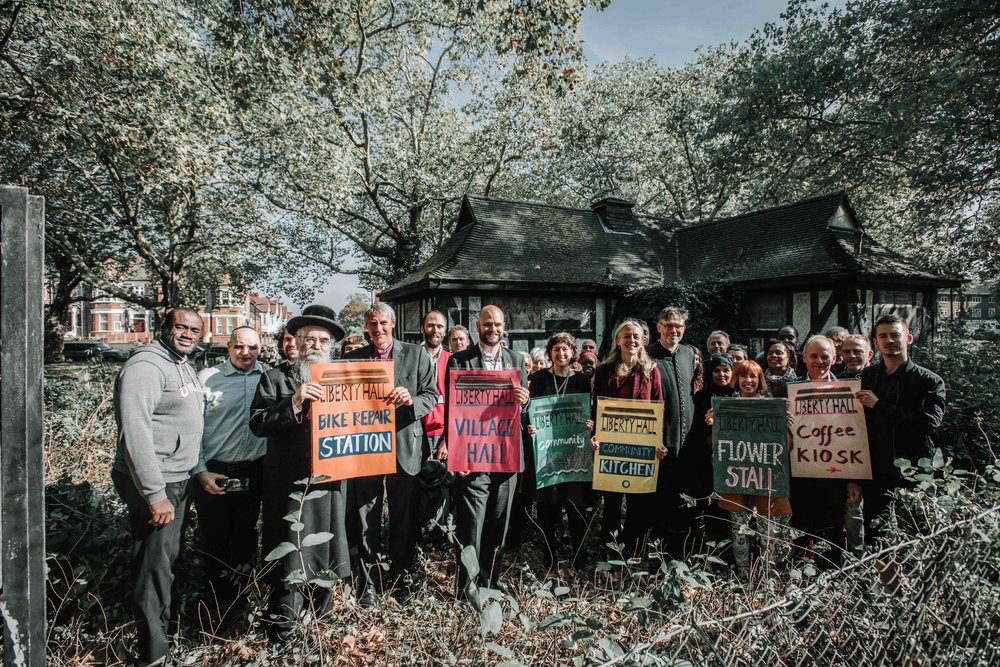
We Grieve
From vulnerability and loss to Common Good
In the new era, our relationship with place has become more important, and the parish may find new ways to fulfil its civic role. This powerful story by Fr William Taylor demonstrates how a church, embedded in local relationships, is uniquely well-placed to act in a way that is meaningful for the whole community. Don’t miss the video below.
A few years ago my church in Stamford Hill in London helped set up a community group called “Clapton Commons”. It was named after the strip of common land that runs through the middle of the parish. There’s a pond here with a fountain that sometimes works, a children’s play area and a 1930s public lavatory with mock Elizabethan half timbering familiar to those who know the department store Liberty’s of London.
As a suburb that emerged in the late 18th Century on the edge of Hackney Marshes and later a tram journey away from the City of London, the Common was previously surrounded by terraces lived in by the newly prosperous middle classes. That is until 1940. Then came the Luftwaffe followed by the planners trying to absorb the post-war population explosion in the capital. Now the Common is surrounded by five housing estates and one retirement home for seniors with complex needs. The public lavatory remains, however – albeit derelict.
There are also four synagogues in the immediate vicinity of the Common, one actually on the site of a building occupied by the first suffragan bishop in London Diocese in the 1880s, Bishop Walsham How. He was living here when the Church of England would still routinely do things like pray for the conversion of all infidels and call the nation to repentance. Now Stamford Hill is home to one of the largest Ultra Orthodox Jewish communities in Europe.
My own church community is small, maybe 30 to 40 people on a Sunday, though there are more on our electoral roll. Like many similar churches in this part of Hackney my congregation is drawn mainly from those families who came to London from the Caribbean or from West Africa in the 1950s and 1960s. We feel vulnerable as a community. Last year I buried eight of our elders. We wonder what the future will hold.
When people ask me what the purpose of “Clapton Commons” is I sometime say that it’s to put the ‘commons’ back into Clapton Common. Certainly many people live very isolated lives here, typical of our globalised economy and the transitory nature of life in the capital. But that’s not the only purpose; the church is also acting out of its self-interest. We realise that we need to make friends if we are to find a new role in this parish.
So we joined up with our neighbours and through Clapton Commons we made a planning application to turn the derelict toilet block on the Common into “a village hall and community kitchen”. We built a partnership with the council, the freeholder, and raised nearly £50K through a crowdfunding campaign to complete the fit-out. We called the building Liberty Hall in honour of that West End exemplar of mock Tudor timbering.

When the hoardings went up last summer we wrote the words ‘Thank You’ on one side in big orange letters so that you could see them clearly from the 254 bus which passes along the Common towards Hackney Central. Then we added the names of all the individuals who had contributed to the fundraiser – everyone from one of our church pensioners who gave a few pounds because she liked the idea of a weekly flower stall to a local rabbi, Abraham Pinter, who had championed our bike repair project on the site. The Hassidim are keen cyclists.
In February we began to organise a grand opening with the bishop, the rabbi and the mayor and we set the date for the nearest Sunday in April to St George’s day. Then came the virus in March and work stopped. We were all sent to our rooms as the infection spread rapidly through our neighbourhood. And then people started dying, including our friends and neighbours, including Rabbi Pinter himself.
I felt incredibly sad at his loss. He had become a friend. I started eating a lot of toast and watching a lot of Netflix. Then I started running. As I ran round the Common in the early morning for my allocated portion of daily exercise it occurred to me that we now had the messaging on the hoarding all wrong. Someone from Clapton Commons suggested instead ‘We Grieve’ and on the day that we should have been cutting the ribbon on Liberty Hall we found ourselves instead repainting the hoarding in equally large letters. This time in dark purple.
Immediately this made sense, a relief. A few days later one woman contacted us on Twitter and said: “I saw this for the for first time a couple of days ago and I wept. We need more acknowledgement of the grief we are all feeling.”
On each successive Thursday, before the clap for the NHS, we now stand in front of the hoarding and recall the names of those we know who have died. These are people known to us personally, from this place. We call out their name and sound a bell and paste a sheet onto the hoarding. Sometimes someone speaks about the person who has died. We keep silence.
This is civic grief. The Mayor of Hackney came to paste the name of Rabbi Pinter and his daughter and grandson attended. We will all mourn our beloved friends and family members through the practices of our distinct communities and traditions but here we are witnessing to a shared loss in our common life. It’s about the individuals, certainly, but it’s also about something else. Maybe it’s closer to what the psalmist calls lament.
In a few weeks the hoarding will be taken down. We are not trying to set up a permanent memorial. This is grieving with fly posters. But we will surely find other ways to witness to the memory of those who have died and that deep sense of loss we are all experiencing at the moment. If this is indeed a change of era then we will need to continue to irrigate whatever new thing the future holds with our tears.
Father William Taylor is Vicar of Saint Thomas’ C of E Church in the London Borough of Hackney and co-founder of Clapton Commons. To find out more, please visit https://www.claptoncommons.org/memori-wall
To follow this story as it unfolds, subscribe to William’s blog here: http://hackneypreacher.com/or follow him on Twitter at @hackneypreacher.
Photo: Fran Hales. Video: Aviel Lewis
If you found this meaningful, you can explore more content like it by subscribing to Together for the Common Good on Substack.
